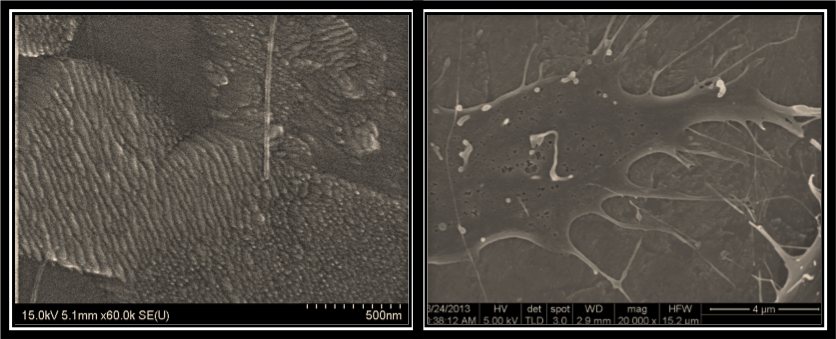Designing novel biointerfaces via plasma and irradiated synthesis for tissue engineering
Materials driven with plasmas far-from equilibrium can achieve self-organized metastable phases with changes in nanotopography, surface chemistry, surface charge density, and surface energy. Because of the macro and micro-environment where the cells reside is known to influence cell function and behavior, these materials properties achieved by irradiation-driven synthesis can be used in the design of bioinspired and bioactive interfaces that can both sense and enhance a biological response for regenerating lost or damaged tissue.
Highlight: Physicochemical and mechanical properties of plasma-derived biointerfaces
One of the objectives in the biomaterial group at the Allain Laboratory is to explore the physicochemical and mechanical properties of new biomaterials obtained by plasma or directed irradiation synthesis. This technology allows a better control over the material’s surface properties, and therefore, enables the design of microenvironments with a variety and unique characteristics for targeting, in a controllable way, a desired biological response. These microenvironments found extended applications on the biomedical field, ranging from platforms for analyses and diagnostics to sensors and scaffolds for tissue repair.
Ripples obtained on Ti6Al4V surface after Directed Irradiation Synthesis treatment (left); and (right) lamellipodia projections and polarization of a human smooth muscle cell in contact with biointerface in left.
People
Sandra Arias
Juan J. Pavón
